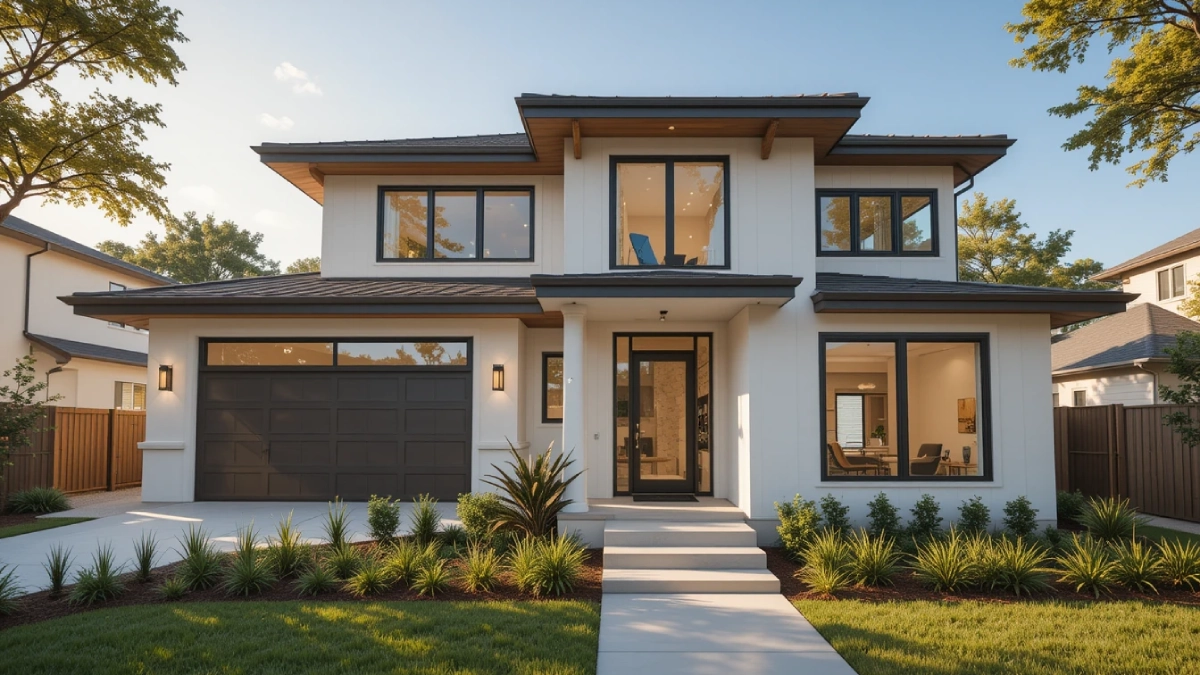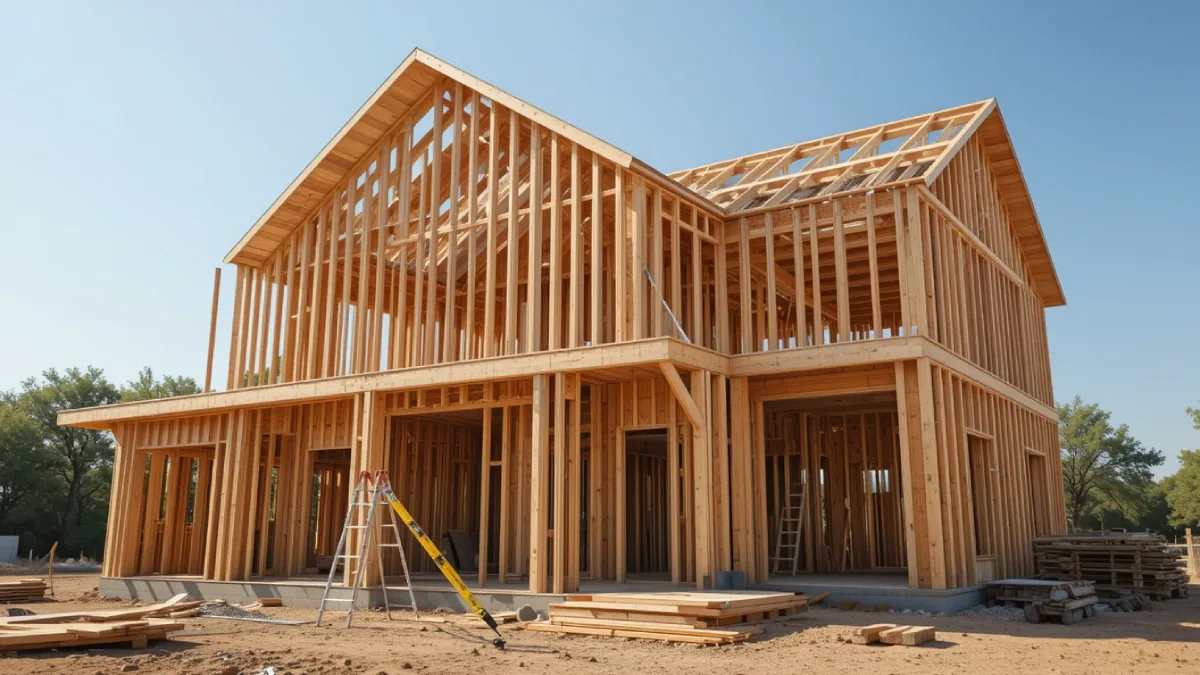Buying a new home is exciting. But before you move in, there’s one last step. It’s called the final walkthrough. This step helps make sure everything is ready. It also gives you a chance to spot problems before you close.
Think of it like checking your order before leaving the store. It’s your chance to say, “Hey, this isn’t quite right,” before money changes hands.
Let’s walk through what to expect, what to bring, and what to check.
Why Your Final Walkthrough Matters
A final walkthrough is your last chance to review your home. It usually happens a day or two before closing. This is not a full home inspection. Instead, you’re making sure the house is move-in ready.
You want to check that repairs have been done. You want to see that the home still looks great. And you want to feel confident that everything works as promised.
In cities like Austin or Dallas, where new homes are built quickly, small details can get missed. Some builders move quickly to meet demand. That’s why this step matters. It protects your investment and your peace of mind.
If something’s wrong, it’s better to catch it now than after moving in.
What to Bring to the Final Walkthrough
Before you head out, gather a few tools. You’ll want to be ready to check everything. A good walkthrough starts with good prep.
Here’s what you need:
- A copy of your purchase agreement so you can check what’s included
- Your final inspection checklist (we’ll give you one below)
- A notepad and a pen to jot down notes
- Your smartphone for photos and video
- A flashlight to see in dark areas like closets or crawl spaces
- Optional: a trusted construction inspector to walk with you
If you’ve hired a real estate agent, they’ll often come with you too.
Final Inspection Checklist: What to Look For
Bring this list with you. Walk through each room slowly. Take your time. Check off each item. It’s not a race—it’s your final chance to catch anything off.
General Interior
- Do all doors open and close smoothly?
- Are locks, knobs, and handles secure?
- Are the walls free of marks, cracks, or dents?
- Do the floors look clean, even, and damage-free?
- Do all the ceiling fans and lights turn on?
- Do all power outlets work?
Kitchen & Bathrooms
- Do faucets run hot and cold water properly?
- Do all sinks, tubs, and showers drain well?
- Is there any leaking under sinks?
- Do toilets flush and refill correctly?
- Do all appliances work (stove, fridge, microwave, dishwasher)?
- Are cabinets and drawers installed correctly and easy to open?
- Is the water pressure intense?
Heating, Cooling & Electrical
- Does the thermostat turn on the HVAC system?
- Is cool or warm air blowing from vents?
- Are all light switches working?
- Are electrical panels labeled?
- Are smoke and carbon monoxide detectors working?
Windows & Doors
- Do all windows open, close, and lock easily?
- Is there visible damage to any glass or frames?
- Do doors shut tightly and seal well?
- Are window screens in place?
- Do exterior doors latch and lock properly?
Outside the Home
- Is the roof free from visible damage or missing shingles?
- Do gutters and downspouts look securely attached?
- Are walkways, steps, and driveways smooth?
- Is the grading correct to move water away from the home?
- Is landscaping complete and healthy?
- Are outdoor lights working?
Pro Tips to Make It Easy
Here are simple tips to make your walkthrough go smoothly:
- Take your time—don’t rush, even if others are waiting
- Use your checklist and check off each item
- Take clear photos and short videos of anything odd
- Ask questions if something looks off or confusing
- Write down everything you notice, even small things
If you hired a construction inspector, let them lead the way. They’re trained to catch small and large issues. Their input can save you from stress later.
Bring a calm mindset. This is a positive step. You’re almost there!
Common Issues in New Homes
Even new homes can have small flaws. That’s normal. Builders work fast, and sometimes tiny things are missed.
Here are a few common problems we see:
- Scratched walls or floors
- Missing or broken outlet covers
- Doors that don’t shut properly
- Loose cabinet hardware
- Paint drips or smudges
- Items promised in your agreement were not installed
- Water that runs slowly or drains poorly
- Appliances not installed correctly
Most of these are quick fixes. But they’re only fixed if you catch them in time. That’s the whole point of the walkthrough.
What If You Find a Problem?
So what happens if you find a problem?
Start by writing it down. Use your checklist or notepad. Then, take a photo. Show the issue to your real estate agent or builder.
Small issues, like a loose knob, can be fixed fast. Larger problems, such as a plumbing leak or a broken appliance, may require more time.
Don’t worry. Your closing can be pushed back if needed. It’s worth the wait to get things fixed properly.
Also, if something is missing from your contract, like a ceiling fan or a specific appliance, point it out. The builder should install it or offer credit.
Final Walkthrough in Austin and Dallas
Cities like Austin and Dallas are growing fast. New homes are built every day. Builders move quickly to meet the demand. That’s great, but it also means mistakes can happen.
When you’re buying in these cities, think about hiring a construction inspector for peace of mind. These experts know what to look for and help you avoid future headaches.
Whether you’re buying a home downtown or in the suburbs, always check the final details. It’s your future home. It should feel perfect.
If something seems off, speak up. You’re not being picky, you’re being smart.
Last Steps Before You Close
Once your walkthrough is done, go over your notes. Make a list of things that need fixing. Send that list to your builder and real estate agent.
Ask for written confirmation that the work will be done. If they can’t fix it before closing, they may agree to do it after you move in.
If you’re happy with everything, it’s time to close. You’ll sign the papers and get your keys. That’s the exciting part!
Before you move in, do a quick check again to be safe. It never hurts to double-check.
Need help from a licensed construction inspector? Or want expert support during your new construction home inspection?
We’ll help make your final walkthrough stress-free and straightforward. Let’s make sure your dream home is ready from day one.
FAQs
No. The home inspection happens earlier, during your due diligence period. This walkthrough is just a final check.
It’s not required, but it’s helpful. They can spot what you might miss.
Most take 30 to 60 minutes. But take as long as you need.
Only if it breaks the contract, most issues just delay closing, not cancel it.
Mention it right away. The builder is responsible for correcting it or offering a solution.

